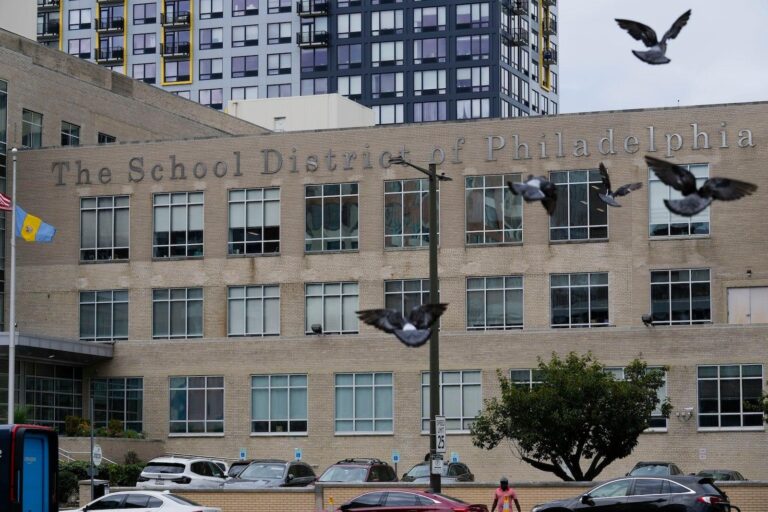Philadelphia Schools Implement Monitoring Plan to Resolve Asbestos Concerns
The Philadelphia School District has recently entered into a formal monitoring agreement with regulatory bodies to address asbestos-related compliance failures identified in several school buildings. This arrangement aims to prevent immediate criminal charges by committing the district to enhanced asbestos management practices. The district will now conduct thorough inspections, maintain transparent reporting, and promptly remediate any asbestos hazards to safeguard the health of students, faculty, and visitors.
Key elements of the agreement include:
- Frequent on-site evaluations conducted by independent asbestos experts
- Submission of quarterly progress reports to environmental and health authorities
- Development and execution of prioritized asbestos removal plans based on risk assessments
- Immediate alert systems for any detected asbestos-related threats
| Milestone | Deadline |
|---|---|
| Comprehensive Facility Evaluation | August 2024 |
| Start of Abatement Activities | November 2024 |
| First Quarterly Compliance Report | December 2024 |
| Ongoing Monitoring and Reporting | Throughout 2025 |
Understanding Deferred Prosecution and Its Impact on School Safety
Choosing to delay criminal prosecution in the case of Philadelphia’s asbestos management shortcomings highlights the delicate balance between enforcing accountability and prioritizing immediate health protections. Deferred prosecution agreements (DPAs) focus on encouraging corrective action and sustained compliance rather than punitive measures. However, their success depends heavily on stringent oversight and transparent communication to maintain public confidence.
Important considerations include:
- Intensified supervision: Ongoing external audits are essential to confirm adherence to asbestos safety protocols.
- Conditional legal responsibility: While prosecution is postponed, the district remains liable and must meet all safety benchmarks to avoid future charges.
- Community reassurance: Open dialogue with parents, staff, and local residents is vital to rebuild trust and demonstrate commitment to health.
- Broader policy influence: This case may inspire other school districts nationwide to adopt proactive environmental health strategies.
| Aspect | Traditional Prosecution | Deferred Prosecution |
|---|---|---|
| Primary Objective | Imposing penalties and liability | Fostering remediation and compliance |
| Result | Criminal conviction and sanctions | Potential dismissal upon successful compliance |
| Oversight Intensity | Limited after trial | Continuous and rigorous monitoring |
| Effect on Safety | Typically reactive measures | Proactive risk reduction |
Examining Asbestos Management Failures and Regulatory Challenges
Investigations into the Philadelphia School District’s asbestos handling revealed significant systemic failures in meeting federal and state safety mandates. These deficiencies, uncovered through inspections and community reports, exposed a pattern of neglect including delayed hazard assessments, improper asbestos removal, and insufficient staff training. Notably, the district failed to conduct timely asbestos surveys, mishandled disposal procedures, and lacked effective communication with affected parties.
To rectify these issues and avoid prosecution, the district agreed to a comprehensive monitoring plan involving:
- Frequent independent audits with detailed reporting requirements
- Mandatory asbestos awareness and safety training for all relevant personnel
- Implementation of a robust asbestos management strategy with clear roles and responsibilities
Addressing asbestos in aging school infrastructure is complex, especially amid budgetary constraints and legacy building materials. The table below outlines key compliance challenges identified:
| Compliance Category | Identified Issue | Required Remedy |
|---|---|---|
| Inspection Schedule | Missed asbestos surveys | Enforce quarterly inspections |
| Personnel Training | Incomplete training documentation | Annual certification for maintenance staff |
| Reporting Procedures | Delayed notifications to regulators | Immediate incident reporting protocols |
Strategies to Enhance Asbestos Management in K-12 Schools
Preventing future asbestos compliance issues in educational settings requires a comprehensive, layered approach. Schools should conduct annual thorough inspections supplemented by unannounced spot checks to detect hazards early. Regularly updated training programs for custodial and maintenance staff are crucial to maintain awareness and preparedness. Additionally, integrating technology such as digital asset management systems can provide real-time monitoring of asbestos-containing materials, enabling swift responses to any deterioration or disturbance.
Partnering with independent environmental consultants ensures objective oversight and transparency. Establishing open communication channels with parents and community members fosters trust and accountability. The following table summarizes effective strategies for strengthening asbestos oversight:
| Approach | Implementation Details | Anticipated Benefits |
|---|---|---|
| Routine Inspections | Annual comprehensive plus random spot checks | Early identification of hazards |
| Ongoing Staff Education | Quarterly refresher training sessions | Heightened compliance and vigilance |
| Digital Tracking Systems | Real-time monitoring of asbestos material conditions | Rapid risk detection and mitigation |
| External Audits | Biannual third-party evaluations | Improved transparency and accountability |
| Community Involvement | Regular updates and stakeholder feedback forums | Strengthened trust and cooperation |
Conclusion: Moving Forward with Accountability and Safety
The Philadelphia School District’s commitment to a structured monitoring program marks a pivotal move toward resolving persistent asbestos management deficiencies without resorting to immediate criminal prosecution. This approach underscores the importance of balancing enforcement with remediation to protect the health of school communities. Sustained vigilance, transparent communication, and adherence to rigorous safety standards will be essential to prevent asbestos hazards from endangering students, staff, and visitors in the future.








